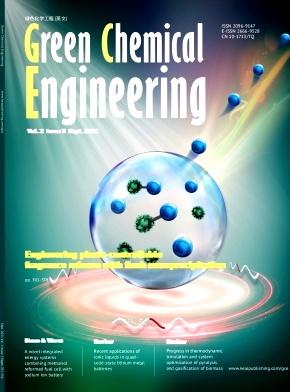Screening HFC/HFO and ionic liquid for absorption refrigeration at the atomic scale by the prediction model of machine learning
IF 9.1
Q1 ENGINEERING, CHEMICAL
引用次数: 0
Abstract
Absorption refrigeration is a highly effective method for utilizing renewable energy, as it can be driven by low-grade heat sources such as industrial waste heat, solar energy, and geothermal energy. The development of new working pairs, particularly hydrofluorocarbon/hydrofluoroolefin refrigerants combined with ionic liquids, has been pivotal in enhancing the cooling efficiency of absorption refrigeration systems. These systems rely on the solubility difference between the generator and absorber, making solubility a crucial factor in determining their efficiency. In this context, we have established an advanced solubility estimation model. This model employs the Attention E(n)-equivariant Graph Neural Network (AEGNN) applied to disconnected graphs, enabling comprehensive learning from both topological and Euclidean structural information. Our atomic-scale model demonstrates significantly higher accuracy than traditional group contribution methods, with an average absolute deviation of 0.003 mol/mol from experimental data. Moreover, it encompasses a much broader range of working pairs. Through extensive screening, we have identified working pairs with high estimated solubility differences. Compared to the high-efficiency working pair identified in the literature, the best-screened working pairs exhibit an improvement in solubility differences by more than 0.3 mol/mol under common operating conditions.

利用机器学习预测模型在原子尺度上筛选用于吸收制冷的 HFC/HFO 和离子液体
吸收式制冷可以利用工业废热、太阳能、地热能等低品位热源,是一种高效利用可再生能源的方法。新型工作对的开发,特别是氢氟烃/氢氟烯烃制冷剂与离子液体的结合,对提高吸收式制冷系统的冷却效率至关重要。这些系统依赖于发生器和吸收器之间的溶解度差异,使溶解度成为决定其效率的关键因素。在此背景下,我们建立了一个先进的溶解度估计模型。该模型将注意力E(n)-等变图神经网络(aegn)应用于断开图,可以从拓扑和欧几里得结构信息中全面学习。我们的原子尺度模型与实验数据的平均绝对偏差为0.003 mol/mol,其精度明显高于传统的群体贡献方法。此外,它涵盖了更广泛的工作组合。通过广泛的筛选,我们已经确定了具有高估计溶解度差异的工作对。与文献中发现的高效工作对相比,在普通操作条件下,最佳筛选的工作对的溶解度差异改善了0.3 mol/mol以上。
本文章由计算机程序翻译,如有差异,请以英文原文为准。
求助全文
约1分钟内获得全文
求助全文
来源期刊

Green Chemical Engineering
Process Chemistry and Technology, Catalysis, Filtration and Separation
CiteScore
11.60
自引率
0.00%
发文量
58
审稿时长
51 days
 求助内容:
求助内容: 应助结果提醒方式:
应助结果提醒方式:


